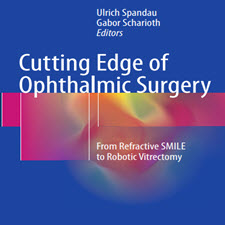Surgery of the Inferior Vena Cava
ABSTRACT
The inferior vena cava (IVC) is the main vein of the human body, formed by the confluence of the left and right common iliac veins. It ascends in the retroperitoneum to the right of the aorta and exits the abdomen through the diaphragmatic hiatus to join the right atrium. It drains the left and right renal veins, the lumbar veins, the right adrenal vein, the right gonadal vein, and the hepatic veins. The azygos venous system connects to the IVC (directly or through the renal veins). The IVC has four segments: the hepatic, suprarenal, renal, and infrarenal segments . Formation of the IVC is the result of anastomoses and regression of embryonic veins including the vitelline vein and paired posterior cardinal, supracardinal, and subcardinal veins. The hepatic segment is composed of the vitelline vein, the suprarenal segment is composed of a segment of the right subcardinal vein, and the renal egment is formed by the anastomosis between the right subcardinal and the right supracardinal veins; a part of the supracardinal vein constitutes the infrarenal segment . Knowledge of the IVC disease is primordial before surgery to avoid serious complications. This chapter will focus on the imaging techniques, the main diagnostic features, and the interventional radiology of IVC disease.
INTRODUCTION
Different imaging techniques are available for IVC assessment—ultrasound (US), multi-detector computed tomography (MDCT), and magnetic resonance imaging (MRI)—and conventional venography can also be used . Conventional venography is the historical gold standard for IVC imaging. The main limitation of this modality is its invasiveness and the use of a high quantity of iodine contrast agent. It is performed using a pigtail catheter positioned just below the common iliac vein confluence. It has been replaced by noninvasive imaging techniques, MDCT and MRI. The advantages of conventional venography are multiple: good spatial resolution, the possibility to analyze the flow, and collateral pathway visualization. Evaluation of the IVC with ultrasound is widely available. The suprarenal portion of the IVC, especially the retro-hepatic portion, is most of the time perfectly analyzed. The main advantage of US exploration is the possibility to combine Doppler assessment, which provides an estimate of the direction and speed of the blood flow within the IVC. However, the infrarenal portion of the IVC is imperfectly seen because of bowel gas interposition and depth of the IVC in the abdomen especially in obese patients. Furthermore, vessel reconstructions are not possible on US. CT and MR imaging are hence usually required for staging and surgical treatment planning.
چکیده
ورید قدام پایین (IVC) ورید اصلی بدن انسان است، که بوسیله اختلالات رگهای عصبی چپ و راست، ایجاد می شود. در سمت راست آئورت به سمت عقب افتاده حرکت می کند و از شکاف دیافراگم خارج می شود تا به دهلیز راست بپیوندد. رگهای کلیوی چپ و راست، رگهای کمری، ورید آدرنال راست، ورید گناد سمت راست و رگهای کبدی را از بین می برد. سیستم venous azygos به IVC متصل می شود (به طور مستقیم یا از طریق رگ های کلیوی). IVC دارای چهار بخش است: بخش های کبدی، سوپراارنال، کلیوی و infrarenal. شکل گیری IVC، نتیجه آنستوموزها و رگرسيون رگهای جنینی شامل وريد ويتلين و وريد های قلبی قدامی خلفی، سوپرا کريستال و زير قارچی است. بخش کبد از ورید ویتولین تشکیل شده است، بخش فوقانی از یک قسمت از ورید زیرکاردیو سمت راست تشکیل شده و عصب کلیه توسط آناستوموز بین ورید های جانبی زیر قلب و راست سمت فوقانی شکل تشکیل شده است؛ بخشی از ورید سارکاردین، بخش مادون قرمز را تشکیل می دهد. آگاهی از بیماری IVC قبل از عمل جراحی اولیه است تا از عوارض جدی جلوگیری شود. این فصل بر روی تکنیک های تصویربرداری، ویژگی های اصلی تشخیصی و رادیولوژی مداخلات بیماری IVC تمرکز خواهد کرد.
مقدمه
تکنیک های مختلف تصویربرداری برای سنجش اولتراسوند IVC (ایالات متحده)، توموگرافی کامپیوتری چندگانه (MDCT) و تصویربرداری رزونانس مغناطیسی (MRI) و Venography معمولی نیز می تواند مورد استفاده قرار گیرد. Venographic سنتی استاندارد طلایی تاریخی برای تصویربرداری IVC است. محدودیت اصلی این روش، تهاجمی و استفاده از مقدار زیاد کنتراست ید است. این کار با استفاده از یک کاتتر پنبه ای که فقط در زیر عارضه معمولی وریدی قرار دارد انجام می شود. با استفاده از تکنیک های تصویربرداری غیرمستقیم، MDCT و MRI جایگزین شده است. مزایای ونوگرافی معمولی چندگانه است: تفکیک فضایی خوب، امکان تحلیل جریان و تجسم مسیر ثابتی. ارزیابی IVC با سونوگرافی به طور گسترده ای در دسترس است. قسمت فوقانی IVC، به ویژه قسمت مجرای کبدی، بیشترین زمان را کاملا تحلیل می کند. مزیت اصلی اکتشافات آمریکا این است که امکان ارزیابی داپلر را در نظر بگیریم که برآورد جهت و سرعت جریان خون در داخل IVC را فراهم می کند. با این حال، بخش infrarenal از IVC به دلیل عدم تعادل گاز روده و عمق IVC در شکم به ویژه در بیماران چاق دیده می شود. علاوه بر این، بازسازی کشتی ها در ایالات متحده امکان پذیر نیست. تصویربرداری CT و MR از این جهت معمولا برای برنامه ریزی و برنامه ریزی درمان جراحی مورد نیاز است.
Year: 2016
Publisher: SPRINGER
By : Daniel Azoulay , Chetana Lim,Chady Salloum
File Information: English Language/ 244 Page / size: 8.37 MB
سال : 1395
ناشر : SPRINGER
کاری از : دانیل Azoulay، Chetana لیم، Chady Salloum
اطلاعات فایل : زبان انگلیسی / 244 صفحه / حجم : MB 8.37


![Surgery.of.the.Inferior.Vena.Cava.A.Multidisciplinary.Approach.[taliem.ir]](https://taliem.ir/wp-content/uploads/Surgery.of_.the_.Inferior.Vena_.Cava_.A.Multidisciplinary.Approach.taliem.ir_.jpg)
![NOTES.and.Endoluminal.Surgery.[taliem.ir] NOTES.and.Endoluminal.Surgery.[taliem.ir]](https://taliem.ir/wp-content/uploads/NOTES.and_.Endoluminal.Surgery.taliem.ir_.jpg)
![Extreme.Hepatic.Surgery.and.Other.Strategies.Increasing.[taliem.ir] Extreme.Hepatic.Surgery.and.Other.Strategies.Increasing.[taliem.ir]](https://taliem.ir/wp-content/uploads/Extreme.Hepatic.Surgery.and_.Other_.Strategies.Increasing.taliem.ir_.jpg)
![Brain.and.Spine.Surgery.in.the.Elderly.2017.[taliem.ir] Brain.and.Spine.Surgery.in.the.Elderly.2017.[taliem.ir]](https://taliem.ir/wp-content/uploads/Brain.and_.Spine_.Surgery.in_.the_.Elderly.2017.taliem.ir_.jpg)
![Common.Problems.in.Acute.Care.[taliem.ir] Common.Problems.in.Acute.Care.[taliem.ir]](https://taliem.ir/wp-content/uploads/Common.Problems.in_.Acute_.Care_.taliem.ir_.jpg)

![Complications.in.Robotic.Urologic.[taliem.ir] Complications.in.Robotic.Urologic.[taliem.ir]](https://taliem.ir/wp-content/uploads/Complications.in_.Robotic.Urologic.taliem.ir_.jpg)
![Transsphenoidal.Surgery.Complication.Avoidance.[taliem.ir] Transsphenoidal.Surgery.Complication.Avoidance.[taliem.ir]](https://taliem.ir/wp-content/uploads/Transsphenoidal.Surgery.Complication.Avoidance.taliem.ir_.jpg)


![Navigated.Transcranial.Magnetic.Stimulation.in.Neurosurgery.[taliem.ir]](https://taliem.ir/wp-content/uploads/Navigated.Transcranial.Magnetic.Stimulation.in_.Neurosurgery.taliem.ir_-150x150.jpg)
![Stress.and.Skin.Disorders.Basic.and.Clinical.Aspects.[taliem.ir]](https://taliem.ir/wp-content/uploads/Stress.and_.Skin_.Disorders.Basic_.and_.Clinical.Aspects.taliem.ir_-150x150.jpg)
دیدگاه خود را ثبت کنید
تمایل دارید در گفتگو شرکت کنید؟نظری بدهید!